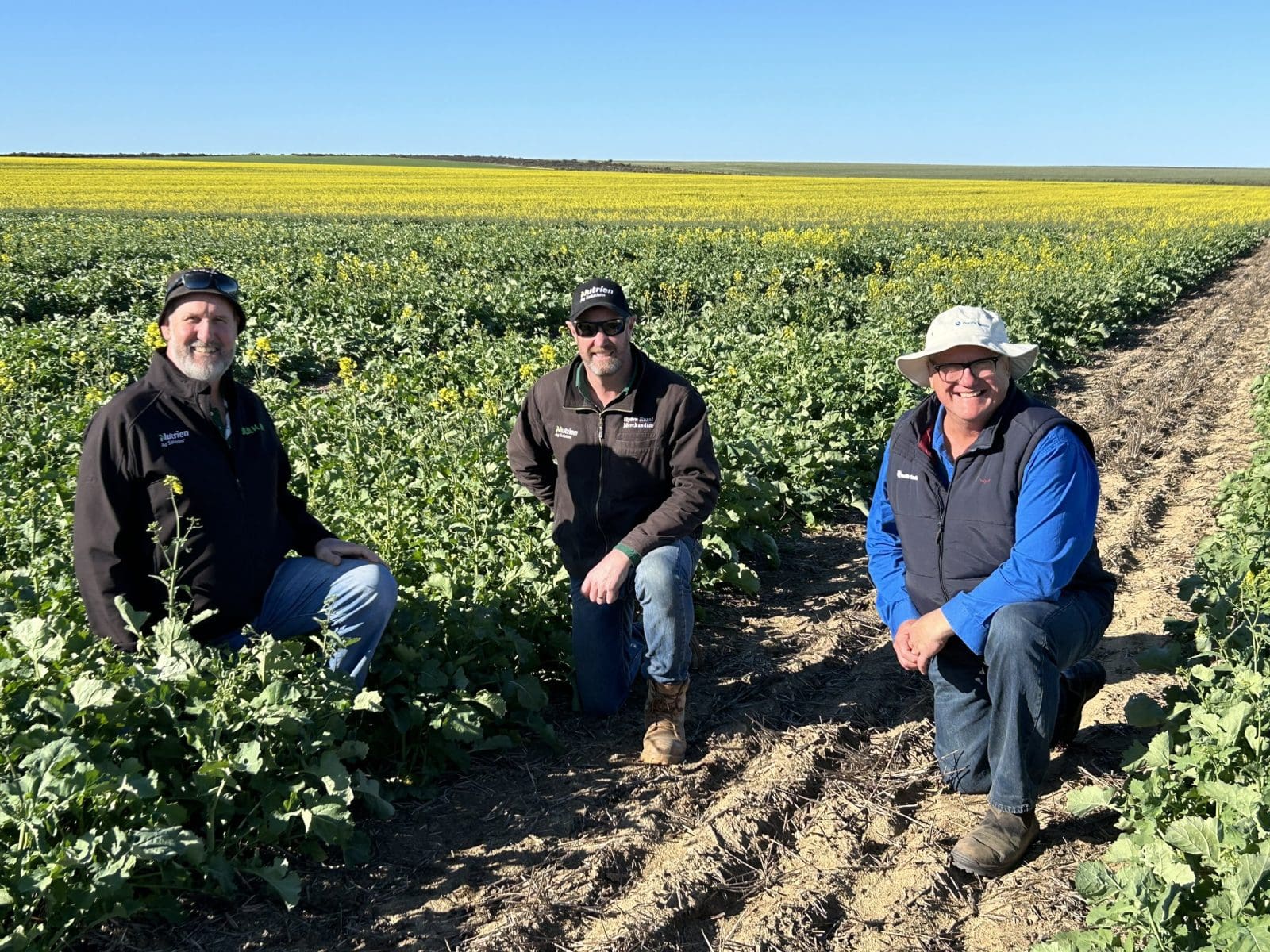
Nutrien’s Steve Jones, Hyden, and Ross Dunkeld, Lake King, inspecting the Hyola Innovation Systems Trial at Hyden with Pacific Seeds canola specialist Justin Kudnig. Photo: Justin Kudnig
THE Grain Industry Association of Western Australia has lifted its forecast for WA’s total grain production to 17.4 million tonnes (Mt), up 7 percent from 16.3Mt estimated in its initial figure released last month.
In GIWA’s August crop report released today, author Michael Lamond said continuing rain across WA growing regions, combined with warm weather in recent weeks, has pushed crops ahead of where they were a month ago.
“Soil-moisture reserves are gradually improving, and the crops have accelerated their development to be close to normal, rather than behind in growth stages as they were in July before the rain started to fall,” Mr Lamond said.
“Growers have reacted to the season and have increased fertiliser applications; crops have responded by bulking up to be in a position of high top-end potential if the rain continues into the spring.”
Based on current climate model outlooks, Mr Lamond said the outlook for this occurring was positive.
“For most regions, the crop-yield potential is currently sitting around recent high averages, rather than longer-term averages, as it was a month ago.
“There is now the potential for total tonnage from all crops across the WA grain belt to be in the high teens.”
To achieve this, rainfall needs to be at least in the decile 5 range for the remainder of August and September, and heat will need to hold off during critical grain-fill periods.

Of the commodity segments that make up the GIWA forecast, the wheat estimate is up 850,000t from the July figure, with barley up 200,000t, oats up 130,000t, lupins up 30,000t, and other pulses up 10,000t.
Only the canola figure is down, and has dropped 100,000t from the July estimate.
Mr Lamond said not all regions have continued to improve, and some areas within the Great Southern and Esperance regions are well down on average annual rainfall.
“Cereals have benefited the most from the step-up in rainfall, particularly where conditions at establishment were favourable and crops established evenly.
“Canola is going to be down on yield in all areas other than the south coast, the western part of the Albany port zone, and the west coastal regions, where the lack of waterlogging is going to result in high whole-paddock grain-yield averages.
“In all other regions, canola crops are either too late, too patchy, or both to achieve anything other than average or below average grain yields.”
Mr Lamond said lupins crops were late but good in the southern regions, and okay to poor in the northern regions.
“Oats have cracked along, relishing the wet, warm growing conditions, and have improved dramatically over the last month to be currently in the higher end of potential grain and hay yields.”
“There is a relatively large area of crop in the ground of around 9 million hectares, which will buffer the downside of production estimates to some extent if spring growing conditions prove unfavourable.”
Source: GIWA
Further detail on crop conditions in individual WA port zones can be found as part of the full report on the GIWA website.

HAVE YOUR SAY